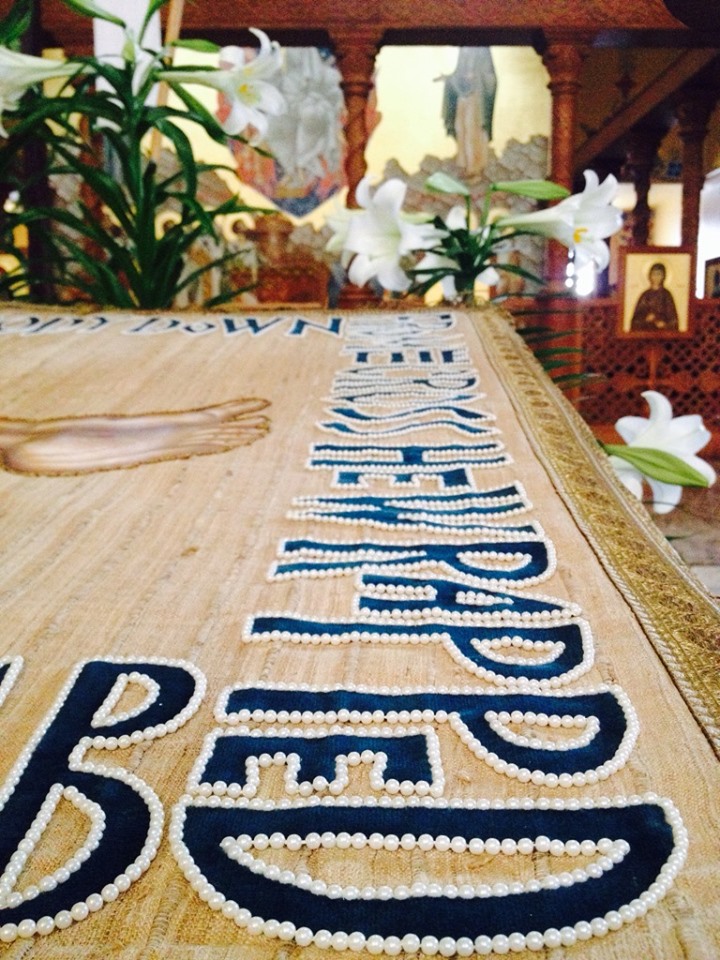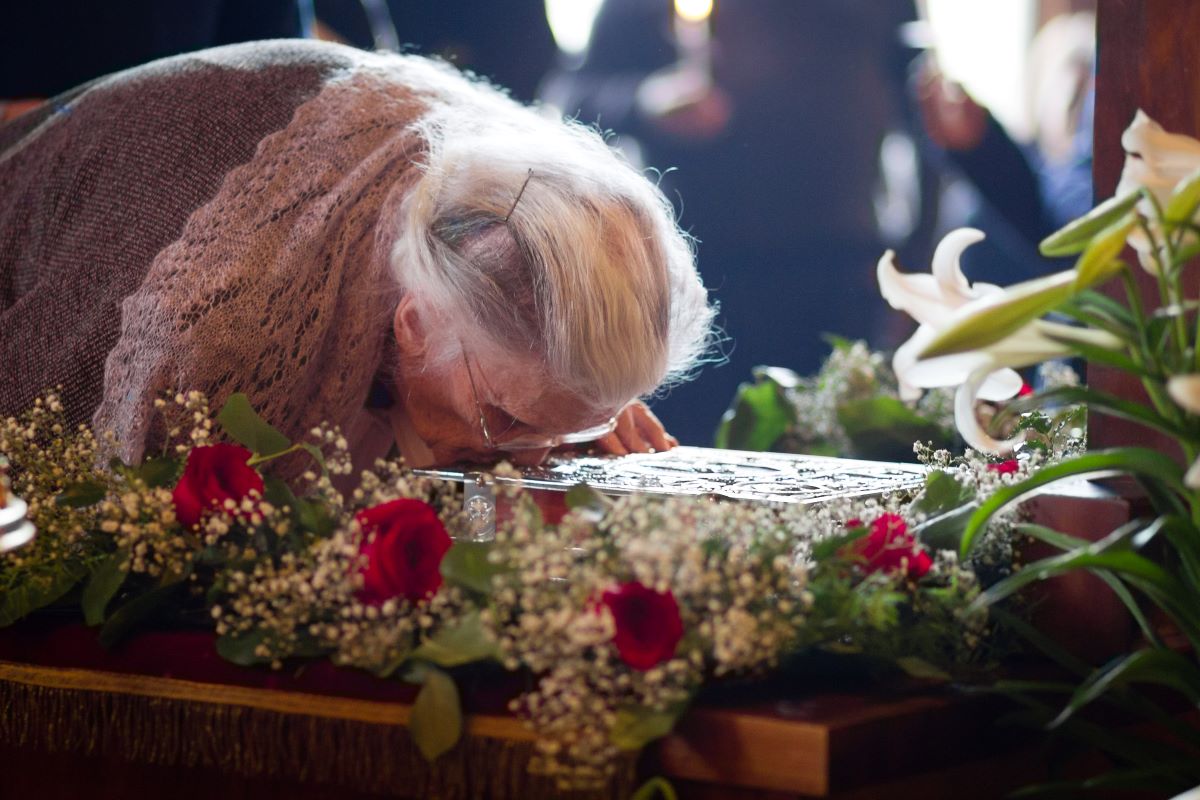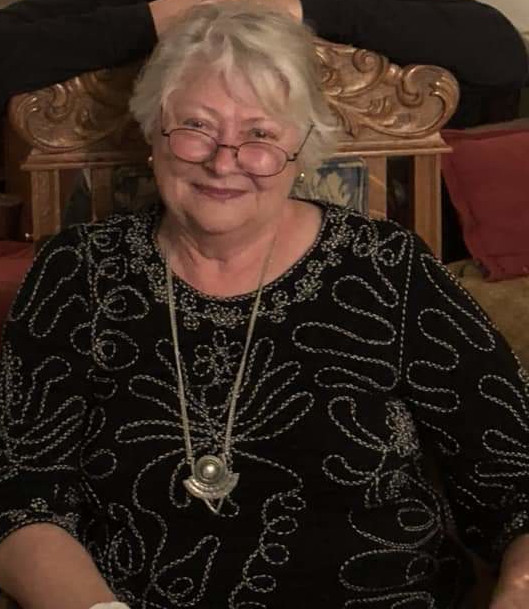
When I wrote my thesis for my MDiv degree at St. Vladimir’s I chose Holy Friday Vespers: the development of a new service and icon in the 11th13th centuries. At this time of distancing during the Corona virus pandemic, I don’t know whether our churches will be open again, and whether we will be able to attend that most beautiful of Passion Liturgies. So, I thought I would evisit my thesis and write a blog about it.
The Christian faith has only one object: the mystery of Christ dead and risen. As a result, the Orthodox Church has structured time for the continuous commemoration of this event. Pascha stands at the very center of importance in the yearly cycle of feasts; every Sunday commemorates Pascha/Easter as the focal point of the week, moreover, the focal point of every Eucharistic Liturgy is Christ’s sacrifice at Communion.
So, how did the moving icon of Christ, dead in His tomb, and the beautiful Passion services of the Entombment of Christ and His Funeral on Holy Friday develop? It was obviously a lengthy process: the evolution from stationing services at the sites of Christ’s Passion in Jerusalem, to re-enacting them in the monasteries of Byzantium, to adopting them in the secular churches of Constantinople took several centuries.
From the late 9th to the 12th centuries, popular interest in stories about Jesus and the Theotokos caused iconography and the hymnography to become more realistic and to mirror human pathos and feeling. At the same time, after Iconoclasm, in monastic centers of Byzantium, there was an outpouring of creativity in liturgical poetry and iconography. There was a tendency to make the drama of grief very real.
A nun from Spain named Egeria (4th C) and other later pilgrims wrote about their experiences in Jerusalem during Passion week and Pascha. After a while, all throughout Byzantium churches began to mimic actually being in Jerusalem and began to try to recreate the holiness of experiencing the taking down of Jesus’ body from the Cross and laying it in a tomb (the first such copying was the service of the Twelve Gospel readings on Holy Thursday as a version of the stational services on-site in Jerusalem).
In many respects, the church services were the theater of the day. At first there were lengthy, very dramatic sermons about the grief of the Theotokos at the suffering and death of her Son. There was even a Passion play in Cyprus from which the wording of certain later hymns is directly taken from this play: “Give me that stranger and good man, which the Jews for envy have taken away to crucify.” (The Cyprus Passion Cycle) Iconography showing the whole cycle of the Passion developed across all of Orthodoxy: The Crucifixion, Joseph and Nicodemus taking Jesus’ body down from the cross, the figures of Mary Magdalene, the Theotokos, St. John, and Joseph and Nicodemus in grieving stance around the prone body of Christ. The rhetorical gestures, familiar to the public of the middle ages, are still pictured in contemporary Passion icons today.
At the same time, the iconography developed within the Liturgy, centered upon the offering of the Gifts in Eucharistic sacrifice. In fact, it is the Great Entrance that is the source of the Epitaphion/Shroud as liturgical object. The Entombment Iconography –the shroud wrapping Christ’s body--became a sure sign of His death in contrast with the iconography of the Women at the empty Tomb, with the linen shroud and napkin left behind as symbols of the Resurrection. The mystic symbolism of liturgical objects reflect the centrality of Christ’s death and resurrection: the altar table has always been linked to the tomb. Originally the Altar Table was covered with a cloth called the ‘eleiton’ (in remembrance of the Shroud). But later the Antimension took over the shroud connection from the ‘eleiton.’ This Antimension was used as a portable altar and had a painted image of Christ’s body lying in the tomb. That is true to this day in Eastern-rite churches.With greater reference to Christ’s sacrifice, the entombment of the Lord was carried out in the
Liturgy with ever greater symbolic detail. Eventually, by the 14th century the cloth covering both Chalice and Discos, the ‘Aer’ was symbolically thde Shroud, as was the under-vestment of the altar table called Shroud. Finally, the Great Entrance at the Hagia Sophia was described: “following the Gifts are those who bear a covering on their heads with an image of the naked and dead body of Christ” (Symeon of Thessaloniki). From that time on, the “archeological and iconographic development of the appearance of ‘Aer/shrouds’ (epitaphioi) began their rapid evolution according to liturgical use” (Robert Taft). That is also why the Epitaphion/Shroud is always depicted on cloth (as was the original shroud, linen cloth)
It is almost impossible to date the development of the Epitaphion Services very accurately, but allusions to it appear as early as the 11th-12th centuries. Finally, by the 13th century, a period of synthesis, during which many local practices were coalesced, canonical church ritual finally emerged. Mention of them is made in the Cyprus Cycle and in the letters of Patriarch Athanasius, inviting the populace of Constantinople and the emperor to come to this wonderful new service of Christ’s entombment (13th century) The parallel development of iconography and liturgy became the very affecting Vespers of Holy Friday, the Entombment of Jesus Christ.
There are hundreds of “Shrouds” today in the world. Some are embroidered on cloth, others painted, but all are central to the Holy Friday services in Orthodox Churches and are deeply loved and venerated. The Epitaphion, (Holy Shroud, Winding Sheet, Plaschanitsa) is seen as the central icon of the Orthodox Christian faith. This paradoxical image is of a horizontal, nude, full body portrait of the dead Jesus Christ, portrayed on a textile. As such, it is the complete opposite of the icon of Christ Pantocrator, the divine and majestic ruler, depicted overhead in the central nave. Although seen as opposite, this Christ is the same One who rules from above. ‘This’ One who rests in death as a man upon the tomb is manifested by the language of the service to be the same One as the Pantocrator, the Word of God and Judge who is to come.
The second very powerful theme brought to the attention of the faithful during Holy Friday Vespers is the image of death. The Epitaphion confronts the faithful with the reality of death, both Christ’s personal death and the ‘universal’ death which all human must undergo. None of us has witnessed a crucifixion. Horrible as its descriptions are, we have never experienced it first-hand. Death, however, we all know. All have lost loved ones; all mourn their loss. This is the living remembrance within us that makes this service so particularly wrenching. The presentation of Christ dead, brings forth a personal response of grief: “we are brought to venerate him who had such compassion for us, who saved us, at so great a price: to entrust our souls to him, to dedicate our lives to him, enkindle in our hearts the flame of his love.” (Nicholas Cabasilas, as quoted by Robert Taft). Emotionally this prepares us for the joy of the Resurrection. Without the darkness, who would exclaim at the light? Without the grief, how could there be the great Paschal rejoicing of midnight’s singing and holy cries: “Christ is Risen! Truly He is Risen!”


Tanya Penkrat, M.Th., is a regular contributor to Axia Women.
The top photo is by Iliana Filby, the second by Leanne Parrott.


